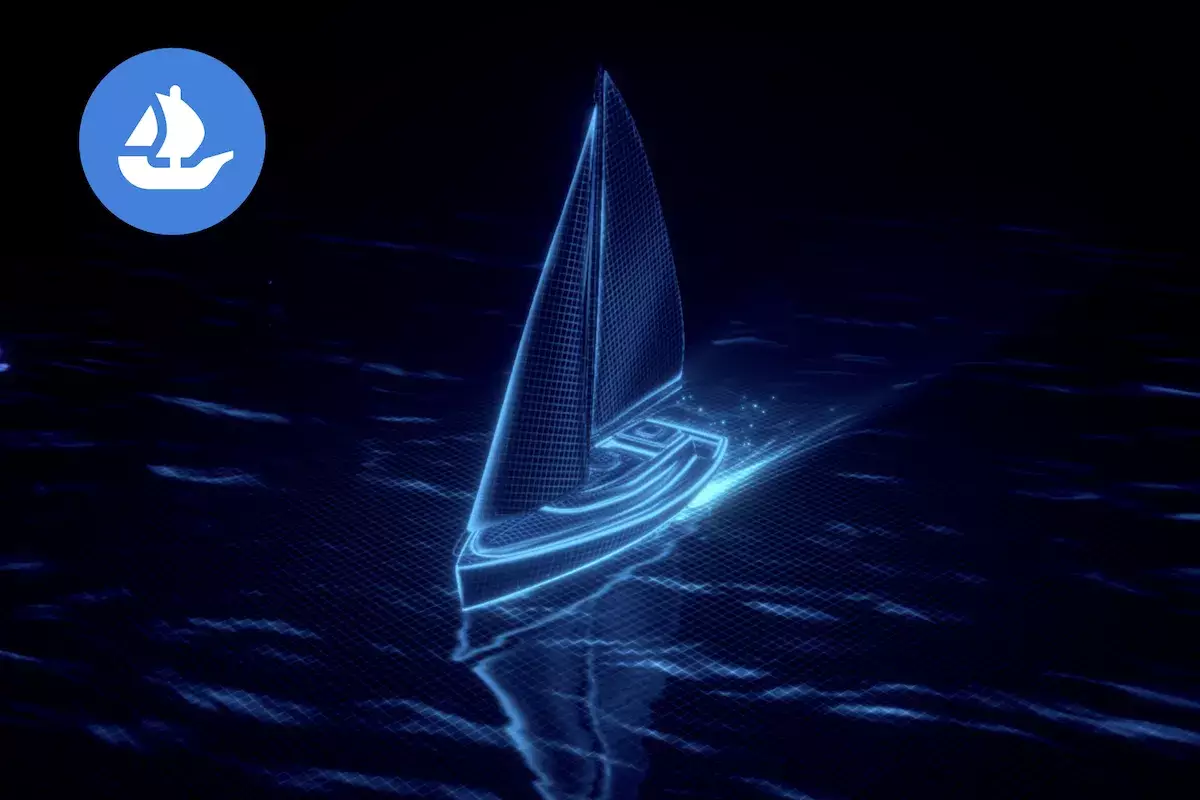The digital art revolution has captured the attention of the global market, with non-fungible tokens (NFTs) emerging as key players in this transformative period. OpenSea, once a titan with over 90% of the NFT trading volume, is now faced with a shifting environment due to an influx of competitors. With the introduction of its new platform, OS2, currently in a private beta phase, the marketplace aims to reassert itself and captivate both returning and new users. This article delves into the implications of OS2, the excitement surrounding it, its critical features, and the challenges it faces in this dynamic space.
OpenSea’s ascension to the forefront of the NFT space has been remarkable. Founded in the early days of NFTs, the platform quickly established itself as a go-to marketplace for users looking to buy, sell, or trade digital collectibles. By streamlining the listing and discovery processes, OpenSea made participating in the NFT ecosystem accessible to a wider audience. However, as the NFT boom persisted, new players entered the field, each bringing innovative features and competitive incentives that chipped away at OpenSea’s market share.
To maintain its relevance in this rapidly evolving market, OpenSea recognized the need for innovation. The acquisition of the Gem NFT platform and its subsequent rebranding as “OpenSea Pro” signaled the company’s intention to not only enhance its offerings but also to create a more engaging experience for users.
In a strategic move, OpenSea distributed Gemesis NFTs to users of the former Gem platform through an airdrop. Initially perceived as a rewarding gesture, these NFTs soon took on heightened significance with the announcement of OS2’s private beta. Those with Gemesis NFTs received priority access, creating a sense of exclusivity around the new platform. Meanwhile, users without these NFTs were left on the sidelines, fueling discussions regarding fairness and accessibility.
High-volume traders expressed frustration over being excluded from the beta, despite having invested significantly in the platform’s ecosystem. OpenSea has attempted to address these concerns, acknowledging the contributions of early supporters but has yet to clarify its plans for broader inclusivity. The current deployment of OS2’s private beta will ultimately hinge on feedback from testers, as OpenSea seeks to balance the needs of both new and loyal users.
One of the standout features of the OS2 platform is the new Experience Points (XP) system. By rewarding users with XP for various activities—such as listing NFTs, making offers, or providing feedback on OpenSea’s Discord—OpenSea aims to foster a more engaged community. This strategy mirrors that of competitors like Blur, which used similar tactics to attract users away from OpenSea by instilling a sense of gamification in trading.
The XP system’s effectiveness in recovering lost users and attracting fresh interest will be a pivotal factor in OpenSea’s resurgence. The key question remains: can XP translate into tangible rewards, such as monetary tokens? While speculation grows around the possibility of an airdrop, regulatory uncertainties loom over OpenSea, complicating the potential release of tokens. For now, the marketplace keeps its options open, stoking anticipation among its users.
The landscape of NFT marketplaces has diversified dramatically over the past year, with alternatives like Blur and Magic Eden causing significant disruptions. For OpenSea, navigating these changes has been challenging—layoffs within the company signal an urgent focus on refining the OS2 platform. In a market where user engagement is crucial for sustained success, OpenSea’s ability to adapt and innovate within OS2 will be closely watched.
As OpenSea continues to refine its platform based on the insights gathered during the private beta, the company must carefully consider how to balance attracting new users with rewarding existing ones. Building a loyal community while also appealing to newcomers will be essential for long-term growth in an ever-competitive environment.
OS2 represents not just an upgrade but a crucial step in OpenSea’s journey to reclaim its title as the leading NFT marketplace. If the platform can fulfill its potential while addressing the concerns of its user base, it may very well usher in a new era for OpenSea and the broader NFT community. As developments unfold, all eyes will remain on OpenSea, particularly regarding the much-anticipated potential for a token airdrop.

